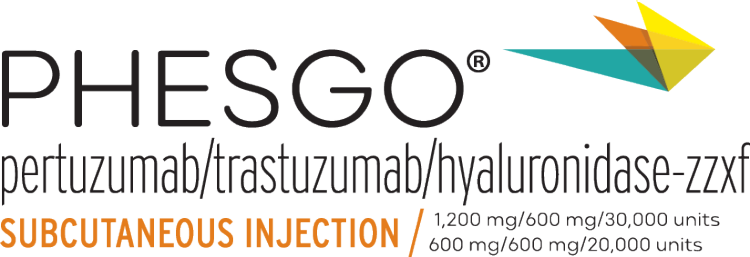Your healthcare team will determine the treatment plan that’s right for you. Those with early breast cancer are treated differently than those with metastatic breast cancer.
If you’re already receiving PERJETA + Herceptin, your doctor may be able to switch you to PHESGO if they think it’s right for you.
Totally new to breast cancer treatment?
Take a closer look at exactly what the treatment schedule for PHESGO is expected to be.
PHESGO for early breast cancer
If you are taking PHESGO for early breast cancer, you will take it every 3 weeks for a total of 1 year (up to 18 cycles) unless side effects become too difficult to manage or the cancer comes back sooner.
You will also get chemotherapy, but the dosing schedule and number of cycles will depend on which type of chemotherapy you are getting. Chemotherapy is typically stopped sooner than PHESGO. Your doctor will decide what chemotherapy regimen is right for you.
Treatment and surgery
For some people, it may be beneficial to start treatment with PHESGO before having surgery, which is called neoadjuvant treatment. One of the goals of neoadjuvant treatment is to help reduce or get rid of cancer cells before surgery.
Most patients should then continue to receive treatment after surgery, which is called adjuvant treatment. The goal of adjuvant treatment is to kill any cancer cells left behind after surgery, to help keep you cancer free for as long as possible.
If you and your doctor decide that starting PHESGO before surgery is right for you, your treatment plan might look like this:

Your doctor may also decide to start you on PHESGO for the first time after surgery, in which case your treatment plan might look like this:

*Unless side effects become too difficult to manage or the cancer comes back sooner.
✝You will also get chemotherapy, but the dosing schedule and number of cycles will depend on which type of chemotherapy you are getting. Chemotherapy is typically stopped sooner than PHESGO. Your doctor will decide which chemotherapy regimen is right for you.
The goal of treatment in HER2+ early breast cancer is cure.
Keep in mind that not all cancers respond to neoadjuvant or adjuvant treatment. It’s possible that the cancer may still return after treatment.
PHESGO for metastatic breast cancer
Metastatic breast cancer is treatable but not curable. A goal of metastatic breast cancer treatment is to help control cancer growth.
PHESGO may be one of the first treatments you get when you are diagnosed with HER2+ metastatic breast cancer. This is known as “first-line therapy,” as in, the first line of defense.
PHESGO is given every 3 weeks until the cancer progresses or side effects become too difficult to manage.
PHESGO is given in combination with a type of chemotherapy called docetaxel. Docetaxel is given for a minimum of 6 cycles. If your doctor stops docetaxel (for example, due to side effects), you can continue receiving PHESGO.
Your treatment plan with PHESGO may look something like this:

Your doctor will continue to monitor and adjust your plan over time and determine when you might need a new treatment.
